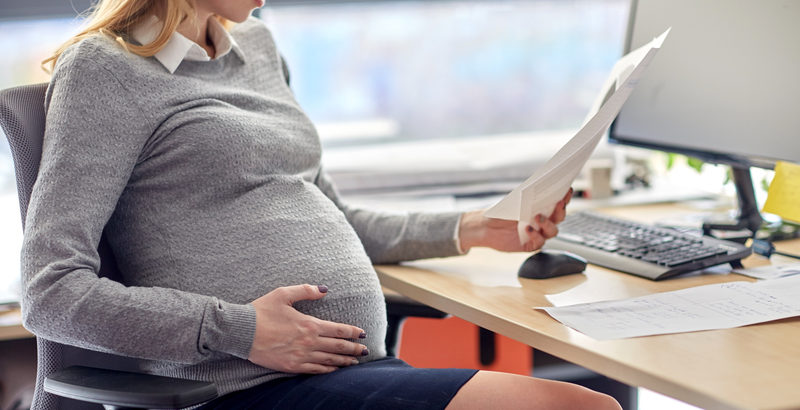Position in which you hold your body while standing, lying down or sitting is the posture. Good posture in the period of pregnancy includes training your body to stand, sit, walk and lie in positions where your back is exposed to least tension.
When you are pregnant, everyday activities like standing and sitting can become quite uncomfortable. If you follow regular pregnancy exercises (under expert’s supervision) and good postures could help you evade certain typical pain and aches related to growing baby bump.
How can a woman improve the posture during pregnancy? On this question you can find out the answers below, by paying attention what to do and what not to do posture wise during pregnancy.

Here are few good practices to consider that will help you better your posture throughout pregnancy:
1) No matter what you are doing, will it be working on a desk or cooking, you must take a break every few hours
2) Every four hours try to take a longer meal break
3) Change work positions continuously, from sitting to standing and then walking
4) Use small pillow or cushion to provide additional support for your back while sitting
5) When sitting keep your knees and hips at a right angle (if needed, utilize a foot rest or stool). The feet should stand flat on the floor.
6) Point your feet in the same way, with weight balanced evenly on both feet, while sitting
7) Sleep on your left side with slightly bent knees with a pillow between the knees
8) To keep the blood flowing, try simple stretches or any kind of movements
9) For stress free pregnancy, try to practice relaxation techniques
10) Hold your head up straight with your chin in while standing. Keep your chest forward and shoulder blades back, buttocks tucked in and knees straight
Below you will find don’ts that will help you improve your posture during pregnancy:
1) You should evade prolonged standing
2) Try to avoid sitting in the same position for more than 30 minutes
3) Try not to cross the leg when sitting
4) You should try to avoid to sit in a chair or lounging position
5) Keep in mind that you do not have to worry about constant urination due to drinking lots of fluids. It only gives you extra chance to move around and change your position
6) Do not sleep on your stomach
7) Try to minimize heavy lifting, carrying or climbing
8) Try to evade bending from waist. While lifting bend your knees only
9) Do not twist your body when lifting
10) Avoid wearing high heels. To prevent stress on your back, you should wear low-heeled (not flat) shoes that will support your feet arches.

What are the typical pains and aches arising because of posture changes during pregnancy?
Posture changes basically lead to serious neck pains, back pains and sometimes pelvic pains due to increased tension and muscular imbalances.
Forward head posture causes neck pain, headaches, pain between shoulder blades, nerve irritation in arms/hands, carpal tunnel syndrome.
Forward tilting of pelvis causes lower back pain, pelvic pain, SPD/PGP.
Increased lower back curve causes lower back pain, nerve irritation in the legs also known as sciatica.
Upper back/thoracic changes cause rib pain, difficulty breathing due to diminished lung capacity.
Find out more interesting information about the best office chairs here.





![10 Best Reclining Office Chair Picks [New 2019 Guide] 10 Best Reclining Office Chair Picks [New 2019 Guide]](https://bestofficechair.org/wp-content/uploads/2018/11/reclining-office-chair-150x150.jpg)
![Top 15 Reclining Office Chairs Reviewed [2018 Definitive Guide] Top 15 Reclining Office Chairs Reviewed [2018 Definitive Guide]](https://bestofficechair.org/wp-content/uploads/2018/09/office-chair-that-reclines-for-naps-150x150.jpg)
![10 Best Office Chairs For Sciatica [2020 Back Pain Guide] 10 Best Office Chairs For Sciatica [2020 Back Pain Guide]](https://bestofficechair.org/wp-content/uploads/2018/05/best-office-chair-for-sciatica-150x150.jpg)

